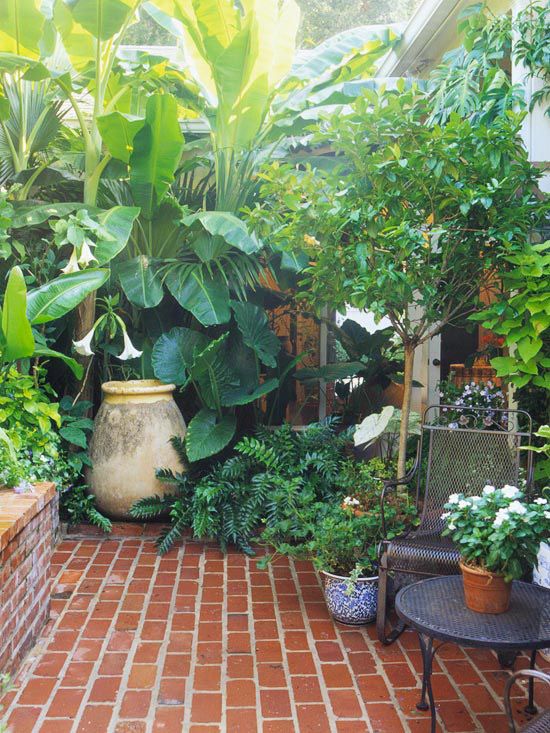Raised bed gardens have become increasingly popular among gardeners of all skill levels. These unique gardening structures offer a multitude of benefits, making them an excellent choice for those looking to grow their own fruits, vegetables, and flowers. In this article, we will explore the advantages of raised bed gardens and delve into the key factors to consider when designing and planning the layout for your own raised bed garden.
One of the most significant advantages of raised bed gardens is the increased accessibility they provide. By elevating the soil level, individuals with limited mobility or back problems can tend to their plants without straining or bending over excessively. Additionally, raised beds allow for easier weed control and pest management as they can be built with various protective measures such as netting or covers.
Another benefit of raised bed gardens is improved soil quality. Unlike traditional in-ground gardening, raised beds give you complete control over the soil composition. This means you can amend and customize the soil to meet the specific needs of your plants, resulting in healthier growth and higher yields. Furthermore, since raised beds are typically filled with high-quality soil mixtures, they are less likely to become compacted or waterlogged compared to regular garden beds.
Lastly, raised bed gardens enable efficient use of space. Whether you have a small urban balcony or a sprawling backyard, raised beds make it possible to maximize your planting area by utilizing vertical space as well as creating pathways between beds for easy access. With proper design layout and careful consideration of your gardening needs, you can create a highly productive garden even in limited spaces.
In the following sections of this article, we will further explore how to harness these benefits through understanding raised bed gardening, choosing the right location for your garden, designing an effective layout, preparing the soil adequately, employing suitable planting techniques, maintaining and caring for your garden properly, troubleshooting common issues that may arise along the way, and finally reaping the delightful rewards of your labor.
Get ready to embark on a journey of gardening success with raised bed garden design layout as your guide.
Understanding Raised Bed Gardening
Raised bed gardening is a popular method of growing plants that offers numerous advantages over traditional gardening. In this section, we will delve deeper into what a raised bed garden is and how it differs from traditional gardening. We will also discuss the various materials that can be used for constructing raised beds.
A raised bed garden is essentially a contained garden plot that is elevated above the ground level. It consists of a rectangular or square container filled with soil that is higher than the surrounding ground. The height can vary depending on personal preference, but typically ranges from 6 to 12 inches. Raised bed gardens offer several benefits, such as improved soil quality, increased accessibility, and efficient use of space.
One key difference between raised bed gardening and traditional gardening is the control over the soil quality. With raised beds, gardeners have the ability to fill them with high-quality soil mixtures tailored to their specific plant needs. This allows for better drainage, root growth, and nutrient availability compared to traditional gardens where soil conditions may not be as favorable.
When it comes to constructing raised beds, there are various material options available. Popular choices include wood, plastic, metal, or even stone. Wood is commonly used due to its affordability and ease of construction. Cedar and redwood are particularly favored as they are naturally rot-resistant.
Plastic offers durability and is often preferred for long-lasting raised beds. Metal provides strength but requires additional measures to prevent rusting. Stone offers aesthetic appeal but can be more time-consuming and costly to install.
Choosing the Right Location
The success of your raised bed garden greatly depends on choosing the right location. Selecting a suitable spot for your garden will ensure that your plants receive the proper sunlight, drainage, and access to water sources they need to thrive. Here are some factors to consider when choosing the right location for your raised bed garden:
Sunlight
One of the most important considerations when choosing a location for your raised bed garden is the amount of sunlight it receives. Most vegetables and plants require at least 6-8 hours of direct sunlight each day to grow properly. Observe your yard throughout the day to determine which areas receive ample sunlight. Avoid placing your raised beds in areas that are heavily shaded by tall trees or buildings.
Drainage
Good drainage is essential for maintaining optimal soil moisture levels in your raised beds. Avoid choosing a low-lying area where water tends to accumulate and make sure that there is proper slope or gradient in the ground if needed. Highly compacted soils with poor drainage can lead to root rot and other problems for your plants.
Proximity to Water Sources
Having easy access to water sources is another important factor to consider when selecting a location for your raised bed garden. Make sure that you can easily reach a water source with a hose or watering can without too much hassle. Placing your garden near a rainwater collection system or close proximity to an outdoor faucet can help simplify watering tasks.
Designing Your Raised Bed Garden
When it comes to designing your raised bed garden, there are several factors to consider in order to maximize space and create an efficient layout. Planning ahead will help you make the most of your gardening experience while also ensuring a visually appealing garden. Here are some tips to keep in mind when designing your raised bed garden:
1. Garden Size: Before you begin designing your raised bed garden, think about how much space you have available. Consider the size of your yard or designated area for gardening and decide how many beds you want to incorporate. This will help determine the overall layout and arrangement of your garden.
2. Bed Dimensions: The dimensions of your raised beds are crucial for optimal plant growth and easy access. When planning the dimensions, keep in mind that beds should be no wider than 4 feet so that you can easily reach the middle from either side. The length can vary depending on the available space, but it’s generally recommended to keep them around 8-12 feet long.
3. Pathways: It’s important to include pathways between your raised beds for easy navigation and maintenance. Pathways should be wide enough for a wheelbarrow or even a small cart to pass through comfortably. A width of at least 2-3 feet is recommended to provide sufficient space for movement.
To help visualize and plan the layout of your raised bed garden, consider using a grid system or graph paper with scale measurements. This will allow you to accurately map out the dimensions of each bed and pathway before physically building them.
Remember to also take into account any existing structures in your yard, such as trees, fences, or buildings, that may affect sunlight exposure or drainage patterns in certain areas. By carefully considering these design elements, you can create a functional and aesthetically pleasing raised bed garden that suits your needs and preferences.
Soil Preparation and Filling Your Beds
Preparing the soil for your raised beds is a crucial step in ensuring the success of your garden. By taking the time to properly prepare the soil, you can create an environment that is rich in nutrients and conducive to healthy plant growth. Here are some tips on how to prepare your soil and fill your beds for optimal gardening:
1. Clear the area: Before filling your beds, it is important to clear the area of any weeds, grass, or debris. This will help prevent competition for nutrients and space, allowing your plants to thrive.
2. Remove existing soil: If you are starting with poor-quality or compacted soil, it may be necessary to remove a layer of it from your raised bed area. You can do this by digging down about 6-8 inches and removing the soil using a shovel or garden fork.
3. Improve drainage: To ensure proper drainage in your raised bed garden, consider adding a layer of gravel at the bottom of each bed before filling it with soil. This will help prevent waterlogging and potential root rot.
4. Fill with quality soil mixtures: When filling your beds, opt for quality soil mixtures that are specifically formulated for raised bed gardening. These mixes usually contain a combination of topsoil, compost, peat moss, and other organic matter that provide essential nutrients for plant growth.
5. Organic amendments: In addition to using quality soil mixtures, incorporating organic amendments such as compost or well-rotted manure into the soil can further enhance its fertility and structure. These amendments add valuable nutrients to the soil and improve its ability to retain moisture.
By following these steps for preparing and filling your raised beds with high-quality soil, you can create an ideal growing environment for your plants. Remember to regularly monitor the moisture level in the beds and adjust irrigation accordingly to ensure healthy plant growth. With proper preparation, you’ll be well on your way to a fruitful and bountiful raised bed garden.
Planting Techniques for Raised Bed Gardens
Once you have designed and prepared your raised bed garden, it’s time to put those plants in the ground. Proper planting techniques are essential for ensuring optimal growth and productivity of your raised bed garden. Here are some guidelines to follow when planting in raised beds.
Firstly, consider the spacing of your plants. Unlike traditional gardening methods, where plants are spaced farther apart, raised bed gardens allow for closer spacing. This is because the soil in raised beds tends to be richer and more nutrient-dense, supporting denser plant growth. However, it’s still important to avoid overcrowding as this can lead to competition for resources like sunlight and water. Be sure to give each plant enough space to grow and thrive.
Companion planting is another technique that can be employed in raised bed gardens. Some plant combinations work well together as they provide mutual benefits such as pest control or improved nutrient uptake. For example, planting Marigolds alongside tomatoes can help deter pests like nematodes while also adding color to your garden. Research different companion planting combinations that suit your chosen plants and incorporate them into your design.
In addition to proper spacing and companion planting, crop rotation is an essential practice in raised bed gardening. By rotating crops each season or year, you prevent the buildup of diseases or pests specific to certain plant families. This helps maintain the overall health of your garden and promotes balanced soil fertility. Keep a record of what you’ve planted where so you can plan future rotations accordingly.
By following these planting techniques in your raised bed garden, you’ll maximize its potential for successful growth and bountiful harvests. Remember to also monitor the needs of individual plants regarding fertilization, watering, and sunlight requirements throughout their growth cycle.
Maintenance and Care for Raised Bed Gardens
Once you have set up your raised bed garden, it is important to properly maintain and care for it to ensure the health and productivity of your plants. Proper maintenance practices will not only keep your garden thriving, but also make your gardening experience more enjoyable. Here are some essential tips for maintaining and caring for your raised bed garden.
1. Watering: Adequate watering is crucial for the success of any garden, including raised bed gardens. Since raised beds often drain better than traditional gardens, they may require more frequent watering. The best time to water is early in the morning or late in the evening to minimize evaporation. It’s important to water deeply, ensuring that the moisture reaches the roots of your plants without causing waterlogged conditions.
2. Fertilizing: Raised beds typically have nutrient-rich soil; however, periodic fertilization is still necessary to replenish nutrients that can be depleted over time. Organic fertilizers such as compost or well-rotted manure are excellent options for providing slow-release nutrients to your plants. Apply fertilizer according to the instructions on the package or consult a local gardening expert.
3. Pest Control: Raised beds are not immune to pests, so it’s essential to implement effective pest control strategies. One approach is practicing companion planting by growing certain plants that repel pests or attract beneficial insects nearby. Additionally, regularly inspect your plants for signs of infestation and take prompt action if needed, such as using organic insecticides or physical removal of pests.
By following these maintenance and care tips, you will be able to enjoy a flourishing raised bed garden throughout the growing season. Remember that each garden is unique and may require slight adjustments based on factors like climate and plant selection. With proper care, your raised bed garden will reward you with bountiful harvests of fresh produce year after year.
Troubleshooting Common Issues in Raised Bed Gardens
Raised bed gardens offer numerous benefits, but like any type of gardening, they can present their fair share of challenges. In this section, we will discuss some common issues that may arise in raised bed gardens and provide practical solutions to overcome them.
One common problem in raised bed gardens is overcrowding. It’s easy to get carried away with planting and end up with too many plants crammed into a small space. Overcrowding can lead to stunted growth, poor air circulation, and an increased risk of diseases and pests.
To avoid this issue, it’s important to follow proper spacing guidelines for each plant variety. Be sure to research the recommended spacing requirements for the plants you want to grow and resist the temptation to squeeze in extra plants.
Another challenge that gardeners may encounter is nutrient deficiencies in the soil. Since raised beds typically use a specific soil mixture instead of native soil, it’s crucial to ensure that the soil is rich in essential nutrients for plant growth. Regularly test your soil to identify any nutrient deficiencies and amend accordingly.
Organic fertilizers or compost can be used to add nutrients back into the soil. Additionally, practicing crop rotation can help prevent nutrient depletion by diversifying the types of plants grown in each bed.
Pest infestations are another issue that may plague raised bed gardens. The close proximity of plants in raised beds can make it easier for pests to spread from one plant to another. Implementing a few effective pest control strategies can help keep unwanted critters at bay.
One method is companion planting, where you strategically place certain plants together that naturally repel pests or attract beneficial insects. Additionally, regular inspection and manual removal of pests can be an effective way to manage infestations before they become widespread.
By addressing these common issues and implementing proper troubleshooting techniques, you can ensure the success and productivity of your raised bed garden. Remember that every garden is unique, and learning from experience is invaluable in honing your skills as a raised bed gardener.
| Common Issue | Solution |
|---|---|
| Overcrowding | Follow proper spacing guidelines for each plant variety and resist the urge to overcrowd. |
| Nutrient deficiencies | Regularly test soil for nutrient deficiencies, amend with organic fertilizers or compost, and practice crop rotation. |
| Pest infestations | Implement pest control strategies such as companion planting, regular inspection, and manual removal of pests. |
Harvesting and Enjoying the Fruits of Your Labor
After putting in the time and effort to care for your raised bed garden, it is finally time to reap the rewards of your labor by harvesting the produce. Harvesting from a raised bed garden can be an exciting and fulfilling experience, as you get to enjoy the fruits of your hard work.
In this section, we will provide guidance on how and when to harvest the produce from your raised bed garden, as well as ideas and recipes for utilizing the fresh produce in delicious meals.
Harvesting vegetables and fruits from a raised bed garden is all about timing. Each plant has its own timeframe for reaching maturity, so it is important to keep track of when they are ready to be harvested.
Many plants will give off visual cues or show signs of ripening when they are ready, such as changes in color or firmness. For example, tomatoes should have a vibrant color and give slightly when gently squeezed, while leafy greens like lettuce and spinach can be harvested when the outer leaves reach a size that suits your preference.
When harvesting your vegetables, it is best to use sharp pruning shears or scissors to prevent unnecessary damage to the plants. This also helps maintain their health and ensures future growth. Remember to clean your tools before each use to reduce the risk of spreading disease between plants.
Once you have harvested your fresh produce, it’s time to put them into good use. There are numerous possibilities for incorporating homegrown vegetables into tasty meals. From simple salads featuring lettuce and tomatoes straight from your raised bed garden, to stir-fries bursting with colorful peppers and zucchini, there are endless ways to celebrate your harvest in the kitchen. Consider preserving excess produce through techniques such as canning or freezing so you can enjoy them throughout the year.
Whether you are an experienced chef or new to cooking with homegrown ingredients, experimenting with different recipes can be both fun and rewarding. By using herbs and spices from your raised bed garden along with your fresh vegetables, you can elevate the flavors of your dishes and create meals that are truly unique.
Don’t be afraid to get creative with your recipes and share them with friends and family. Harvesting from a raised bed garden not only provides you with nourishment but also offers you an opportunity to bond over the fruits of your labor with loved ones.
Conclusion
In conclusion, the design layout of a raised bed garden plays a crucial role in its beauty and success. Throughout this article, we have explored the numerous benefits of raised bed gardens, such as increased accessibility, improved soil quality, and efficient use of space. By understanding the concept of raised bed gardening and selecting the right location for your garden, you can create an ideal environment for your plants to thrive.
Designing your raised bed garden involves careful planning and consideration of factors such as garden size, bed dimensions, and pathways. Taking the time to properly prepare the soil and fill your beds with quality mixtures and organic amendments will ensure optimal growing conditions for your plants. Additionally, implementing proper planting techniques, spacing, companion planting, and crop rotation will contribute to the success of your garden.
Maintenance and care are important aspects of keeping a raised bed garden healthy and productive. Regular watering, fertilizing, and pest control measures specific to raised beds should be implemented to prevent potential issues. It is also essential to troubleshoot common problems that may arise in raised bed gardens such as overcrowding or nutrient deficiencies.
Finally, after all your hard work and dedication to nurturing your raised bed garden, comes the joy of harvesting and enjoying the fruits of your labor. Knowing when to harvest produce is crucial for optimal flavor and nutrition. Furthermore, exploring new recipes that showcase the freshness of your homegrown vegetables will enhance your culinary experiences.
Frequently Asked Questions
What Is the Best Layout for a Raised Bed Garden?
The best layout for a raised bed garden depends on various factors such as the available space, sunlight exposure, and personal preferences. One popular layout is the rectangular shape, which maximizes the use of space and makes it easier to access all areas of the garden. Another option is creating multiple square or rectangular raised beds with pathways in between, allowing for efficient movement and separation of different types of plants.
Some gardeners even opt for round or curved raised beds to add visual interest to their gardens. Ultimately, the best layout is one that suits your needs and provides easy access and proper spacing for plants.
How Do You Arrange Plants in a Raised Bed?
When arranging plants in a raised bed, it’s important to consider their size, growth habits, light requirements, and compatibility with neighboring plants. Generally, taller plants should be placed at the back or center of the bed to prevent them from shading shorter plants. It’s also a good idea to place climbing or vining plants near trellises or supports to maximize vertical space.
Consider grouping plants with similar water and sun requirements together so you can easily provide them with appropriate care. Additionally, leave enough space between each plant to allow for airflow and prevent overcrowding which can lead to disease or nutrient competition.
How Do You Structure a Raised Garden Bed?
Structuring a raised garden bed involves several key steps to ensure its stability and functionality. Start by selecting suitable materials such as rot-resistant wood (such as cedar) or durable materials like metal or concrete blocks. Determine the dimensions of your bed based on available space and consider making it no wider than 4 feet so you can comfortably reach across without stepping into the bed itself. Use stakes or posts driven into the ground at each corner to secure the frame and prevent shifting over time.
Next, line the bottom of your raised bed with landscape fabric or cardboard to suppress weed growth while allowing for proper drainage. Finally, fill the bed with a mixture of quality soil amended with compost or organic matter to provide optimal growing conditions for your plants. Aim for a depth of at least 12-18 inches to accommodate the roots of most vegetables and flowers.

Welcome to my gardening blog! I am passionate about plants and enjoy sharing my knowledge and experiences with others. In this blog, I will write about everything related to gardening, from tips on how to get started to updates on my own garden projects.





